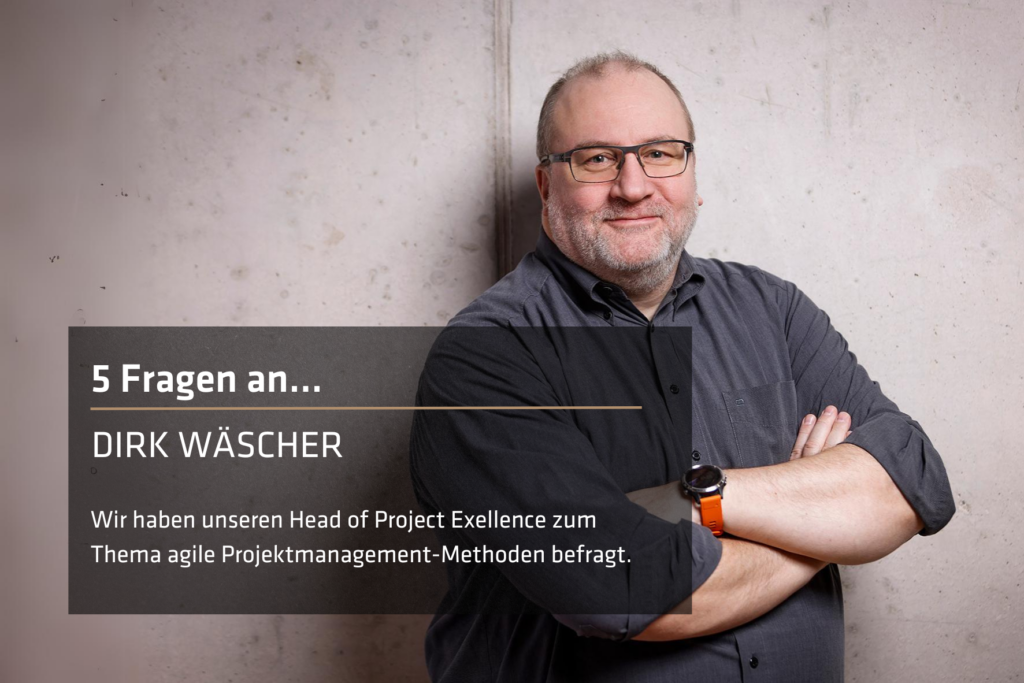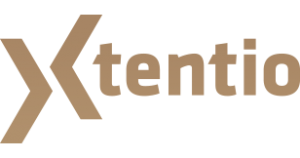From the increasing importance of agile and hybrid methods to the need for transparency and efficient implementation tips for companies - Dirk Wäscher, Head of Project Excellence at Xtentio, provides a look behind the scenes.
Read this article to learn how companies can create successful projects through clear structures, transparency, and the right rhythm.
5 questions about Agile Project Management Methods
Question 1: What current trends do you see in project management?
Dirk Wäscher:
1. Agile and hybrid methodologies continue to gain traction
Companies have recognized that they need to react to changes in projects. This is why in project management agile methods more and more widespread. Small, self-organizing teams deliver faster results, react flexibly and use the Advantages of the networked working world. In many companies, however, agile projects come up against traditional controlling and non-agile divisions. Here hybrid methods are gaining in importanceif an agile approach is to be used in these companies.
2. Transparency requirements
The networking of projects and plans requires Communication and coordination planning and content, even beyond the boundaries of the projects. The Identification of dependencies between projects and the task of being able to carry out your own planning based on the results of others require a high level of transparency. Consistent identification and management of dependencies are key to cross-project success.
3. Planning vs. Agility
Both agile methods and hybrid working environments require strategic planning in order to achieve. long-term success . Agile project planning ensure that necessary adjustments can be implemented quickly without jeopardizing the timing and overall goal of the project. One Strategic planning at the start of a new project and their periodic review However, this is necessary so that project managers can keep track of all progress at all times and goals can actually be achieved.
Question 2: What three tips would you give companies to help them deliver projects more efficiently, quickly and easily?
Dirk Wäscher:
1. Rhythm
A predefined rhythm for all involved creates commitment and focus. The project remains in a state of flux at all times, while the constant time periods allow for predictable overlaps between teams and other levels.
2. Create Transparency
All tasks of a project, their dependencies and the people responsible for them must be communicated clearly and openly This avoids misunderstandings and allows tasks to be completed more quickly and efficiently. Virtual online collaboration platforms for teams (such as Miro) help to disclose intermediate steps and results to all team members, which in turn can make general work easier.
3. Timeboxes also for the Results
A visible sign of good project progress for many is that deadlines are met. While the publication of results is postponed in many projects, it is advisable to work with fixed deadlines here too and to publish results that have not been achieved after the next deadline. timebox to be published. The time commitment achieved helps with the assessment of project progress and the transparent presentation of the successes achieved.

Question 3: What advice would you like to give to companies that are still at the very beginning of their "agile journey"?
Dirk Wäscher: Large transformation projects can seem overwhelming and impossible at first glance. But switching to a agile project method does not happen overnight.
It is important to take small steps and learn first, because agility in projects also thrives on learning cycles. Plan various steps for a new, small project diverse teams with a clear distribution of roles and divide the task into manageable, thematic units. You can then create fortnightly sprint meetings to check the current status of the interim goals and make any necessary changes to your approach.
You will quickly realize how much more efficiently a team works when tasks are clearly structured and there is good communication between them. Is the first small step towards Agility If this is not done within the company, employees will also enjoy it and feel a certain skepticism towards such changes.
Question 4: How do you ensure that you see the "big picture" in a multi-faceted project?
Dirk Wäscher: The FAST Framework for Agile Scaled Teams works on several planning levels. For example with objectives for an entire year which are distributed on several seasons and then are brought down to more detailed planning at sprint level. In addition, the projects are also organized in parallel working groups. Value streams organized. While each of these is responsible for itself, the overall view is maintained via joint planning events for the year and year-end. Season planning ensured.
The interrelationships of even a complex project are built up here on the joint planning boards. This is how Dependencies and risks visible and can be managed jointly. Thanks to the common rhythm with timeboxes ensures coordination between the tasks and those responsible.
Question 5: How has your work changed since you started using the Fast Method?
Dirk Wäscher: It has always been important for us to involve as many affected areas as possible in digital transformation projects. At FAST, this idea runs through the various planning levels and project roles. The use of FAST has therefore simplified the interaction with project participants from different areas.
Having an overview of the project status and the ability to contribute makes it easier for many project participants to collaborate and communicate.
The shared rhythm also makes it much easier to meet deadlines, as the timeboxes are the same for everyone and are planned well in advance. Interrelationships and dependencies become transparent across the various value streams. The joint planning events help with this and also lead to a feeling of togetherness in the project.
The different planning horizons also make it easier for stakeholders to focus on the initial tasks at hand and get organized.
You can find out more about project management by clicking here:
